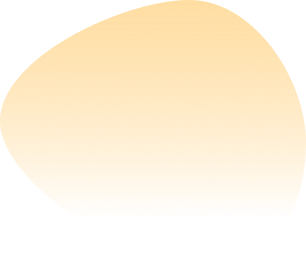Conditions
Tearing Disorder
Tearing disorders, also known as lacrimal disorders, involve abnormal tear production or drainage in the eyes. They can lead to excessive tearing (epiphora) or insufficient tearing (dry eye).
Book an appointment.
Consult our expert team to discover if cataract surgery can restore your crystal-clear vision and learn about the advanced lens options that can enhance your sight.
appointments
Would you like to speak with someone to schedule your appointment?
+960 332 1026
Feedbacks
Do you have some feedback for us in mind? Please send us an email message.
Suitability self test.
Take our quick Suitability Self-Test to see if you're a potential candidate for surgery.

Tearing Disorder Incidence/Prevalence
Tearing disorders, also known as lacrimal disorders, involve abnormal tear production or drainage in the eyes. They can lead to excessive tearing (epiphora) or insufficient tearing (dry eye). The prevalence of excessive tearing can be less clearly defined but is often reported in association with other conditions such as allergies or chronic eye diseases.

Tearing Disorder Causes
Causes of Excessive Tearing (Epiphora)
- Blocked Tear Ducts
- Irritation or Allergies
- Infections
- Eye Conditions
- Systemic Conditions
Causes of Insufficient Tearing (Dry Eye Syndrome)
- Age-Related Changes
- Hormonal Changes
- Environmental Factors
- Medical Conditions
- Contact Lens Wear
- Surgery
Tearing Disorder Diagnosis and Examination
Diagnosing tearing disorders involves a comprehensive eye examination to assess tear production, drainage, and overall eye health. Here’s a detailed overview of the diagnosis and examination process:
- Patient History
- Symptom Inquiry: The eye care professional will ask about the specific symptoms, such as:
- Duration and severity of tearing
- Presence of dryness, irritation, or discomfort
- Any associated symptoms like redness, burning, or blurred vision
- Medical History: Information about any existing medical conditions, medications, or allergies is gathered.
- Symptom Inquiry: The eye care professional will ask about the specific symptoms, such as:
- Visual Acuity Test
- Assessment: The patient’s vision is checked using a standard visual acuity test (e.g., Snellen chart) to rule out any related visual impairments.
- Tear Production Tests
- Schirmer Test: This test measures the amount of tear production. A small strip of filter paper is placed under the lower eyelid for a few minutes, and the amount of wetting is measured.
- Tear Break-Up Time (TBUT): This test evaluates the stability of the tear film. A fluorescent dye is applied to the eye, and the time until the first dry spot appears is measured.
- Eye Examination
- External Examination: The eye care professional examines the eyelids, lashes, and surrounding areas for any abnormalities.
- Slit Lamp Examination: A slit lamp is used to inspect the cornea, conjunctiva, and tear film closely. This helps identify any structural issues or signs of inflammation.
- Lacrimal System Evaluation
- Fluorescein Staining: A dye is used to check for corneal abrasions and assess the health of the eye’s surface.
- Probing of Tear Ducts: If blockage is suspected, a probe may be inserted into the tear ducts to assess for any obstructions.
- Imaging: In certain cases, imaging studies (such as a dacryocystogram) may be performed to visualize the tear drainage system.
- Discussion of Findings
- After the examination, the eye care professional will discuss the results, including any diagnosed conditions, and recommend appropriate treatment options based on the findings.
- Follow-Up
- Depending on the diagnosis, follow-up appointments may be necessary to monitor symptoms and adjust treatment as needed.
Tearing Disorder Treatments
- For Excessive Tearing:
- Treat Underlying Conditions: Address allergies, infections, or irritants.
- Dacryocystorhinostomy: Surgery to create a new tear drainage pathway if ducts are blocked.
- For Insufficient Tearing:
- Artificial Tears: Over-the-counter lubricating eye drops to relieve dryness.
- Prescription Medications: Such as cyclosporine A (Restasis) to increase tear production.
- Punctal Plugs: Small devices inserted into tear ducts to retain tears on the eye’s surface.
Tearing Disorder FAQs
How can I tell if I have a tearing disorder?
Symptoms may include watery eyes, dryness, irritation, burning sensations, or blurred vision. If these symptoms are persistent, it’s important to consult an eye care professional.
Can tearing disorders affect vision?
Yes, both excessive tearing and dry eye syndrome can lead to blurred vision and discomfort, affecting overall visual clarity.
Are tearing disorders common?
Yes, they are relatively common, especially among older adults and individuals with specific risk factors, such as certain medical conditions or prolonged screen use.
When should I see a doctor about tearing disorders?
If you experience persistent tearing, dryness, or discomfort, or if your symptoms worsen over time, it’s advisable to consult an eye care professional for a thorough evaluation.
Can lifestyle changes help manage tearing disorders?
Yes, lifestyle changes such as increasing outdoor time, reducing screen time, using humidifiers, and taking regular breaks during visual tasks can help manage symptoms.

